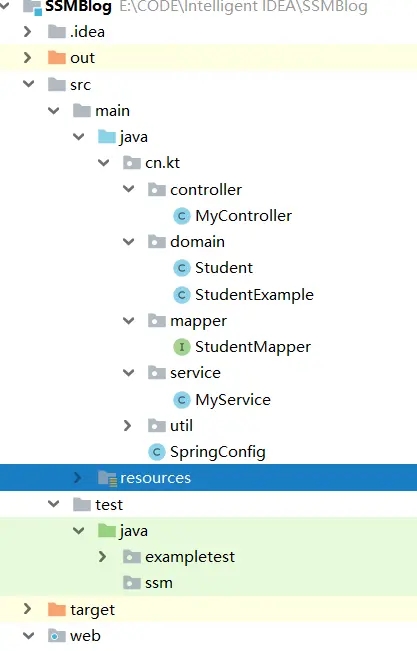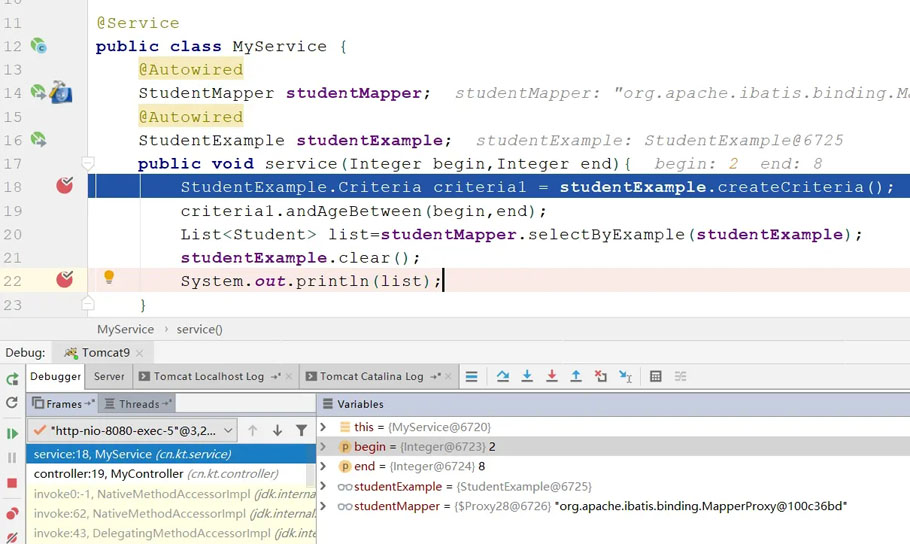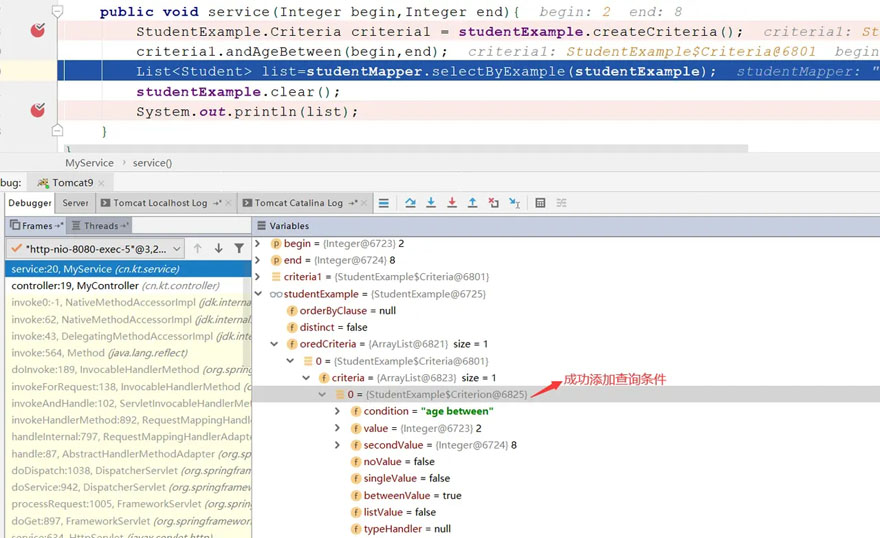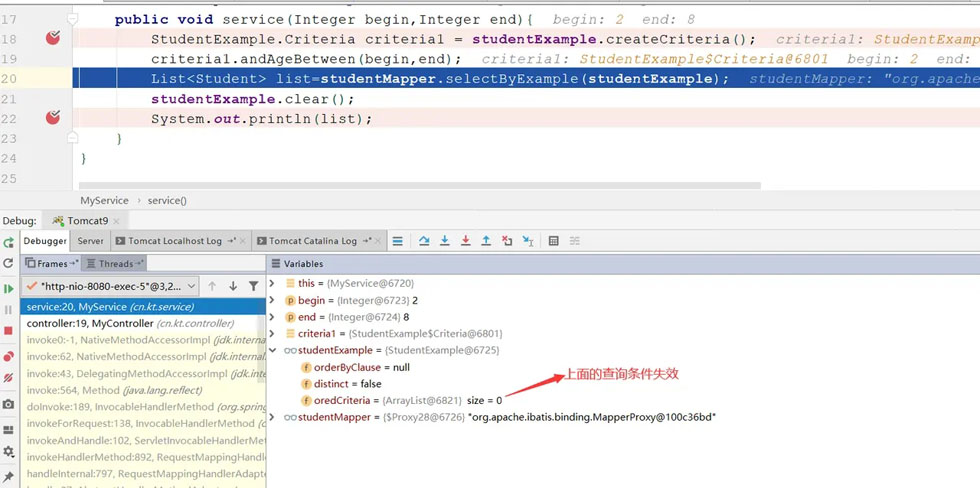前言
服务器每收到一个请求,都会从线程池中调度一个空闲线程来处理,spring整合的web时,controller和service一般都是单例的,这样导致无论你的Example标注的是单例还是多例,同一个service下的Example也只有一个,多线程访问时产生的
问题如下
问题详情
工程目录结构如下

MyService 的service()方法接收两个参数并据此查询数据库
@Service
public class MyService {
@Autowired
StudentMapper studentMapper;
@Autowired
StudentExample studentExample;
public void service(Integer begin,Integer end){
StudentExample.Criteria criteria1 = studentExample.createCriteria();
criteria1.andAgeBetween(begin,end);
List<Student> list=studentMapper.selectByExample(studentExample);
studentExample.clear();
System.out.println(list);
}
}
当同时有两个请求时,两个请求的StudentExample相同
请求1如下
begin=2,end=8

请求2如下
begin=4,end=8

先放行请求1,请求1成功添加条件

再放行请求2,请求2添加失败

这时如果请求2在请求1执行查询操作前就已经执行完studentExample.clear (),请求1的查询条件就失效了

至此两个请求都没有得到正确的结果。
解决方案
可以使用ThreadLocal为每个线程配备单独的Example,为保证每次都能获取到值,这里对ThreadLocal简单扩展一下,如果当前线程没有对应的Example(多例),就从spring容器中获取一个并与这个线程绑定。
ThreadLocalExtension
public class ThreadLocalExtension<T> extends ThreadLocal<T> {
//获取ApplicationContext方法见下
@Autowired
ApplicationContext applicationContext;
public ThreadLocalExtension(){
super();
}
public T get(Class<T> example){
T bean=super.get();
if(bean==null){
super.set((T) applicationContext.getBean(example));
}
return super.get();
}
}
spring泛型依赖注入
由于Example会有很多个,所以这里使用了泛型,spring4.0提供了对泛型依赖注入的支持。
首先实际类型对应的ThreadLocalExtension交由spring管理
@Repository
public class StudentExampleThreadLocal extends ThreadLocalExtension<StudentExample> {
}
然后直接在代码中注入
@Autowired ThreadLocalExtension<StudentExample> studentExampleThreadLocal;
修改后的MyService
@Service
public class MyService {
@Autowired
StudentMapper studentMapper;
@Autowired
ThreadLocalExtension<StudentExample> studentExampleThreadLocal;
public void service(Integer begin,Integer end){
StudentExample studentExample = studentExampleThreadLocal.get(StudentExample.class);
StudentExample.Criteria criteria1 = studentExample.createCriteria();
criteria1.andAgeBetween(begin,end);
List<Student> list=studentMapper.selectByExample(studentExample);
studentExample.clear();
System.out.println(list);
}
}
获取ApplicationContext
创建一个类实现ApplicationContextAware,并向spring容器中注入applicationContext
@Component
public class ApplicationContextHelper implements ApplicationContextAware {
private static ApplicationContext applicationContext;
public ApplicationContextHelper() {
}
@Bean(name="applicationContext")
public ApplicationContext getApplicationContext(){
return applicationContext;
}
@Override
public void setApplicationContext(ApplicationContext applicationContext) throws BeansException {
ApplicationContextHelper.applicationContext = applicationContext;
}
public static Object getBean(String beanName) {
return applicationContext != null?applicationContext.getBean(beanName):null;
}
}
结果
至此,整个改造完成,看看效果
请求1

请求2

每个请求获取到了不同的StudentExample,也就不存在冲突的问题,并且StudentExample没有大量的创建与销毁,最多只创建了与服务器线程池中线程相同的个数,实现了重复使用
总结
以上就是这篇文章的全部内容了,希望本文的内容对大家的学习或者工作具有一定的参考学习价值,谢谢大家对的支持。